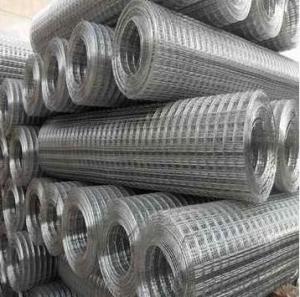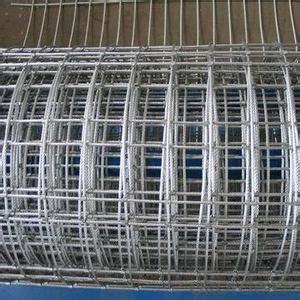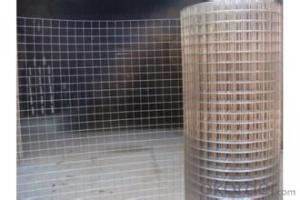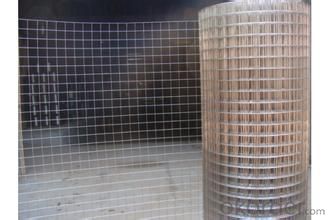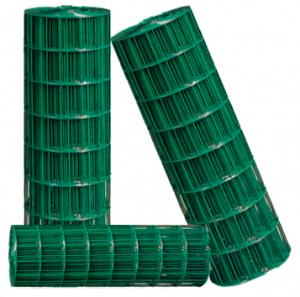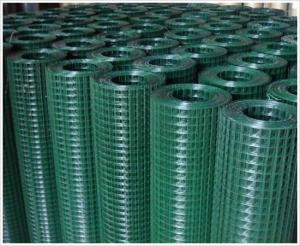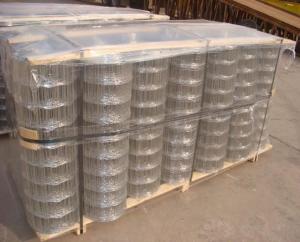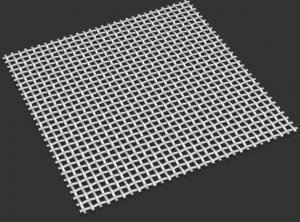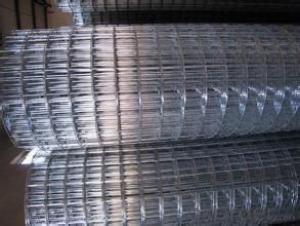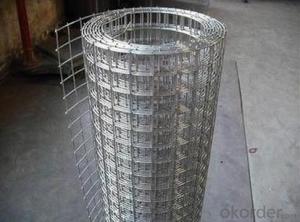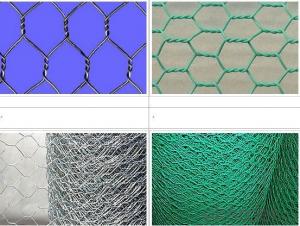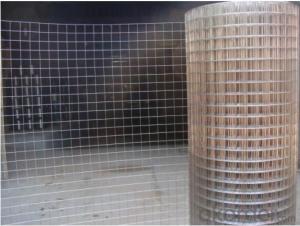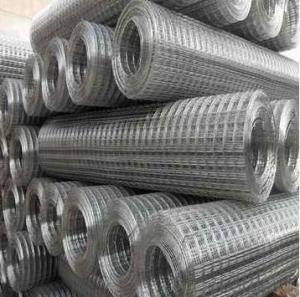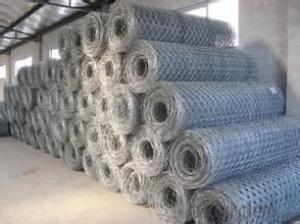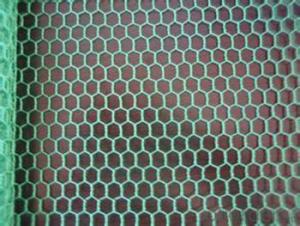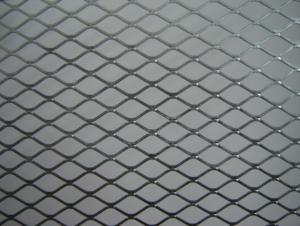Welded wire mesh-1 X 2
- Loading Port:
- China Main Port
- Payment Terms:
- TT or LC
- Min Order Qty:
- 50 roll
- Supply Capability:
- 5000 roll/month
OKorder Service Pledge
OKorder Financial Service
You Might Also Like
Introduction of Welded Wire Mesh
Welded Wire Mesh is made of by high quality galvanized wire, Low carton steel wire, stainless steel wire, iron wire, Galvanized steel wire, PVC coated iron wire in blue, green, yellow and other colors.
Application of Welded Wire Mesh
Galvanized welded wire mesh, PVC coated welded wire mesh for garden, feeding agriculture, fishing, poultry, mine field, lawn cultivation, and profession’s guard, decorate machine protection. Special welded wire mesh, (Heavy)welded wire mesh panel service as fencing mesh for transportation industry, construction a agriculture.
Surface treatment of of Welded Wire Mesh
a. Black (mild steel wire)
b. Electro galvanized, (galvanized before welding, galvanized after welding)
c. Hot dip galvanized, (galvanized before welding, galvanized after welding)
d. Pvc coated welded wire mesh, (black wire mesh then pvc coated, electro gal. then pvc coated, hot dip gal. the pvc coated)
Advantage of Welded Wire Mesh
Our welded wire mesh has strong corrosion-resisting and oxidation-resisting with good quality and rock bottom price.
Packing of Welded Wire Mesh
1. Waterproof paper then PVC shrinking Film
2. PVC shrinking film only
3. Black waterproof paper only
4. Waterproof paper then metal/wooden pallet
5. Plastic film then carton
(Also as your request. )
Pictures of Welded Wire Mesh

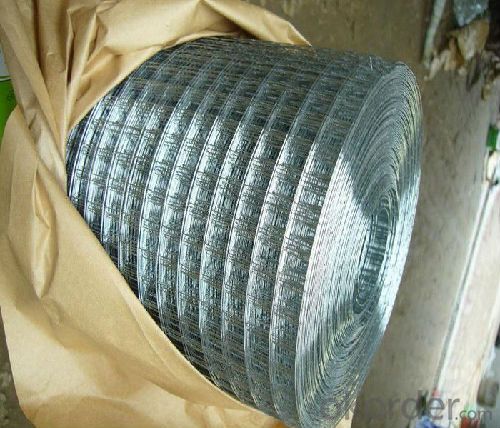
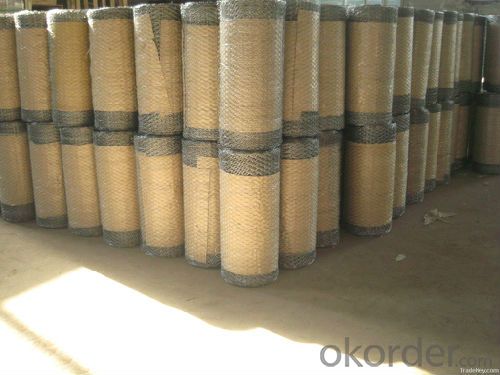
Specification of Welded Wire Mesh
Standard Welded Wire Mesh (in 30m length, Width of 0.5m-1.8m) | ||
Mesh | Wire Gauge (BWG) | |
Inch | MM | |
1/4" x 1/4" | 6.4mm x 6.4mm | 22-24 |
3/8" x 3/8" | 10.6mm x 10.6mm | 19-22 |
1/2" x 1/2" | 12.7mm x 12.7mm | 16-23 |
5/8" x 5/8" | 16mm x 16mm | 18-21, |
3/4" x 3/4" | 19.1mm x 19.1mm | 16-21 |
1" x 1/2" | 25.4mm x 12.7mm | 16-21 |
1-1/2" x 1-1/2" | 38mm x 38mm | 14-19 |
1" x 2" | 25.4mm x 50.8mm | 14-16 |
2" x 2" | 50.8mm x 50.8mm | 12-16 |
1/4" x 1/4" | 6.4mm x 6.4mm | 12-16 |
Welded Fencing Mesh (in 30m Length, Width of 0.5m -1.8m) | ||
Mesh | Wire Gauge (BWG) | |
Inch | MM | |
2" x 3" | 50mm x 75mm | 1.65-2.5mm |
3" x 3" | 75mm x 756mm | 1.65-2.75mm |
2" x 4" | 50mm x 100mm | 2.1-2.9mm |
4" x 4" | 100mm x 100mm | 2.0mm,2.5mm |
FAQ
We have organized several common questions for our clients,may help you sincerely:
1. How about your company?
A world class manufacturer & supplier of welded wire mesh and is one of the large-scale professional investment welded wire mesh bases in China. Annually more than 1000 containers of welded wire mesh are exported to markets in Europe, America and Japan.
2. What is the storage condition?
The welded wire mesh should be stored at room temperature and kept from wet and heat source.
3. How to guarantee the quality of the products?
We have established the international advanced quality management system,every link from raw material to final product we have strict quality test;We resolutely put an end to unqualified products flowing into the market. At the same time, we will provide necessary follow-up service assurance.
4. How long can we receive the product after purchase?
In the purchase of product within four working days, we will arrange the factory delivery as soon as possible. The specific time of receiving is related to the state and position of customers. Commonly 7 to 10 working days can be served.
- Q: Is steel wire mesh suitable for use in automotive filters?
- Yes, steel wire mesh is suitable for use in automotive filters. Steel wire mesh is known for its durability, strength, and resistance to corrosion, making it an ideal material for automotive filters. It can effectively filter out particles and debris from the air or fluids passing through the filter, ensuring optimal performance and longevity of the vehicle's engine. Additionally, steel wire mesh can withstand high temperatures and pressure, making it suitable for use in automotive filters that are subject to harsh conditions. Overall, steel wire mesh is a reliable and efficient choice for automotive filters.
- Q: Is steel wire mesh suitable for gabion baskets?
- Yes, steel wire mesh is suitable for gabion baskets. Gabion baskets are typically used for erosion control, retaining walls, and slope stabilization, and steel wire mesh provides the necessary strength and durability for these applications. Steel wire mesh is resistant to corrosion, which is important when the baskets are exposed to outdoor elements. Additionally, the open design of the mesh allows for proper drainage and prevents the buildup of water pressure behind the baskets. Steel wire mesh is also easy to assemble and install, making it a practical choice for gabion basket construction.
- Q: Is steel wire mesh resistant to impact or abrasion?
- Yes, steel wire mesh is generally resistant to both impact and abrasion. Steel wire mesh is known for its strength and durability, making it highly resistant to impact. It can withstand the force of heavy objects or external pressure without breaking or deforming easily. Similarly, steel wire mesh is also highly resistant to abrasion. The tightly woven steel wires create a solid and sturdy surface that can withstand friction and wear over time. This makes steel wire mesh a suitable material for various applications that require protection against impact or abrasion, such as fencing, reinforcement in concrete structures, or industrial filters.
- Q: Can steel wire mesh be customized according to specific requirements?
- Yes, steel wire mesh can be customized according to specific requirements. Steel wire mesh is a versatile material that can be fabricated and modified to meet specific needs. The customization options include variations in wire diameter, mesh size, and weave pattern. Additionally, steel wire mesh can be cut to different shapes and sizes, and can also be welded or framed for added strength and stability. This flexibility allows for tailor-made solutions for various applications such as filtration, reinforcement, security, and architectural design. With advanced manufacturing techniques, steel wire mesh can be customized to meet specific requirements and provide the desired performance characteristics.
- Q: What are the different load-bearing capacities available for steel wire mesh?
- The load-bearing capacity of steel wire mesh can differ based on various factors such as wire thickness, wire diameter, wire spacing, and overall mesh size and configuration. Different load-bearing capacities of steel wire mesh are readily available to accommodate different needs and applications. For lighter purposes like fencing or decoration, steel wire mesh with lower load-bearing capacities may suffice. These meshes typically have thinner wires and wider spacing, making installation easier and offering a lighter-weight solution. On the other hand, heavy-duty applications such as industrial or construction projects may demand steel wire mesh with higher load-bearing capacities. These meshes are usually constructed with thicker wires and narrower spacing to provide increased strength and stability against heavier loads and stresses. The load-bearing capacities of steel wire mesh can range from a few hundred pounds per square foot to several thousand pounds per square foot. It is crucial to consider the specific requirements of the project and consult with manufacturers or suppliers to determine the most suitable load-bearing capacity for the intended application. Furthermore, it is important to note that the type of steel used, the manufacturing process, and any additional treatments or coatings applied to the mesh can also influence load-bearing capacities. Therefore, obtaining detailed technical specifications and performance data from the manufacturer is advisable to ensure the chosen steel wire mesh meets the desired load-bearing requirements.
- Q: Can steel wire mesh be used for tree protection?
- Yes, steel wire mesh can be used for tree protection. Steel wire mesh is a durable and versatile material that can provide effective protection for trees against various external factors such as animals, vandalism, and harsh weather conditions. It can be used to create a physical barrier around the tree, preventing animals from accessing the trunk and damaging the bark. Additionally, steel wire mesh can be used to create a protective cage or enclosure around young trees, shielding them from wind, heavy rains, or snow. This mesh also allows for proper airflow and sunlight penetration, ensuring the tree's health and growth. Overall, steel wire mesh is an excellent choice for tree protection due to its strength, durability, and ability to withstand different environmental conditions.
- Q: Does steel wire mesh provide good ventilation?
- Steel wire mesh does provide good ventilation. The open structure of the mesh allows air to freely flow through, making it an ideal choice for applications where ventilation is necessary. Whether it is used in windows, fences, or other structures, the steel wire mesh allows for the circulation of fresh air while also providing security and protection. Additionally, the durability and strength of steel make it a reliable option for long-term ventilation needs. Overall, steel wire mesh is an effective solution for achieving good airflow and ventilation in various settings.
- Q: Can steel wire mesh be used for conveyor belts?
- Yes, steel wire mesh can be used for conveyor belts. It is a durable and strong material that can withstand heavy loads and high temperatures, making it suitable for various industrial applications.
- Q: Can steel wire mesh be used for sunshade?
- Yes, steel wire mesh can be used for sunshade. It is a durable and strong material that can effectively block sunlight and provide shade in various outdoor settings.
- Q: What are the different weaving patterns available in steel wire mesh?
- Steel wire mesh offers a variety of weaving patterns, each with its own distinct characteristics and uses. Some commonly used patterns include the following: 1. Plain Weave: The most basic and widely used pattern, plain weave involves interlacing wires in a simple crisscross manner. It is known for its strength, durability, and versatility. 2. Twilled Weave: In this pattern, each wire passes over two adjacent wires and under two others in a diagonal arrangement. Twilled weave offers a tight structure and high strength, making it ideal for applications requiring extra durability and resistance to wear and tear. 3. Dutch Weave: Dutch weave combines elements of plain and twilled weaves. It typically utilizes thicker warp wires and thinner weft wires, resulting in a tighter weave and smaller openings. Dutch weave is often used when precise filtration and separation are necessary. 4. Welded Wire Mesh: Unlike the previous patterns, welded wire mesh is not woven but rather created by welding individual wires at their intersections. This produces a strong, rigid mesh with consistent openings. Welded wire mesh finds common use in construction, fencing, and industrial settings. 5. Expanded Metal Mesh: Instead of weaving wires, expanded metal mesh is formed by cutting and stretching a metal sheet. This process creates interconnected diamond-shaped openings. Expanded metal mesh is lightweight yet sturdy, making it popular for architectural applications, filtration, and security purposes. These examples represent only a fraction of the weaving patterns available for steel wire mesh. The choice of pattern depends on specific requirements such as strength, filtration capabilities, and visual aesthetics.
Send your message to us
Welded wire mesh-1 X 2
- Loading Port:
- China Main Port
- Payment Terms:
- TT or LC
- Min Order Qty:
- 50 roll
- Supply Capability:
- 5000 roll/month
OKorder Service Pledge
OKorder Financial Service
Similar products
Hot products
Hot Searches
Related keywords
